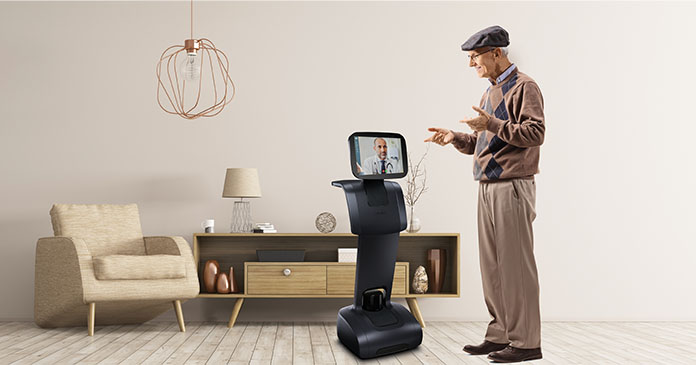
“The newly-pioneered technologies will be essential in providing the best care—medical, cognitive and emotional—to the upcoming wave of seniors.”
The way we live our lives and conduct business has drastically changed in 2020—a trend that also includes the senior housing industry. Namely, according to a recent post from international property company JLL, COVID-19 has prompted senior housing communities to quickly to adopt new technologies, faster than they might otherwise have.
Currently, technology is used in these communities as a way to keep both residents and workers safe from coronavirus. As one example, communities across the country are using robots to perform various tasks such as room cleaning and temperature checks.
The technology is also used to help these communities function more efficiently.
According to JLL, uses for these robots include telehealth and other service-oriented functionality. These communities need to be as efficient as possible because according to the U.S. Census Bureau, all baby boomers will be over the age of 65 by 2030, which is estimated to be about 73 million people. “What the pandemic has done is it’s forced operators to step back and say, ‘We have this problem to solve—and we need to solve it now,’” Zach Bowyer, managing director at JLL said. “It’s expedited the technological progress needed to prepare for the population that will be entering senior housing communities over the next decade.”
Robots such as temi are helping the market with this progress. temi, according to the company’s website (temi was developed by software company Connected Living), is the first robot that interacts with humans by using advanced AI and dynamic video and audio experiences.
In Manhattan, temi is used at Maplewood Senior Living for foodservice tasks, sanitizing surfaces and hands-free temperature checks. In Lincoln, Nebraska, two disinfection robots developed by SkyTron are used at Eastmont Senior Living to use UVC light to kill bacteria and viruses.
Another aspect of technology in senior living communities is telehealth. The pandemic caused a huge increase of virtual health appointments for necessary reasons, but one big perk for senior housing is that the service allows on-site medical staff to give quality time with residents, said Audrey Symes, director of research for healthcare, life sciences and advisory at JLL.
“One of the biggest roadblocks that was impeding telehealth was the inability of healthcare systems to communicate with each other,” Symes said. “But with hospital staff stretched thin and the need to follow COVID-19 protocols, the pandemic has forced that tipping point, and solutions are emerging.”
All of these steps for better technology are pertinent to the senior housing environment as baby boomers continue to age. Although vacancy rates at senior housing units were down in Q1, there is still a demand for the sector. According to JLL research, 45,000 senior housing units need to be built per year in order to keep up with the aging population.
“The newly-pioneered technologies will be essential in providing the best care—medical, cognitive and emotional—to the upcoming wave of seniors,” Symes said.
Excerpt Carley Beckum, ALM












